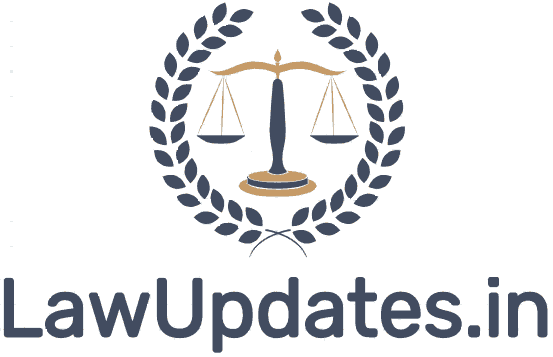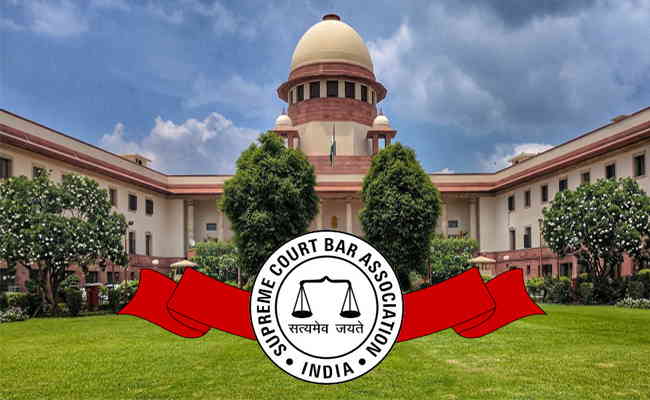The Supreme Court on Monday upheld the Central government’s 2019 decision to abrogate Article 370 of the Constitution which had conferred special status on the erstwhile State of Jammu and Kashmir [In Re: Article 370 of the Constitution].
A Constitution Bench of Chief Justice of India (CJI) DY Chandrachud and Justices Sanjay Kishan Kaul, Sanjiv Khanna, BR Gavai and Surya Kant unanimously upheld the decision of the government to take away Article 370 on the ground that the same was a transitory provision.
The verdict came in a batch of petitions challenging the Central government’s 2019 move to delete Article 370.
The Parliament subsequently passed the Jammu and Kashmir Reorganisation Act bifurcating the State into the two Union Territories – Jammu and Kashmir, and Ladakh.
There were three judgments in total. One was authored by CJI Chandrachud on behalf of himself, Justice Gavai and Justice Kant. Justices Kaul and Khanna authored separate concurring judgments.
The Court held that Article 370 was only a transitory provision enacted partly due to the wartime conditions in Jammu and Kashmir (J&K).
“We hold that Article 370 is a temporary provision. It was introduced to serve transitional purposes, to provide for an interim arrangement until the Constituent Assembly of the State was formed and could take a decision on the legislative competence of the Union on matters other than the ones stipulated in the instrument of accession and to ratify the Constitution. Second, it was for a temporary purpose, an interim arrangement, in view of the special circumstances because of the war conditions in the State,” the Court said.
The Court opined that simply because the Constituent Assembly ceased to exist, it did not mean Article 370 would continue permanently.
“The President was empowered to issue the order to abrogate Article 370,” the Court concluded.
“Article 370(3) was introduced for constitutional integration and not for constitutional disintegration. Holding that 370(3) cannot be used after constituent assembly was dissolved cannot be accepted,” the Court added.
Article 370 a temporary provision enacted due to wartime conditions in Jammu and Kashmir.
Supreme Court
The Court, therefore, upheld Constitutional Order 272 (CO 272) issued by the President on August 5 to the extent it made provisions of the Constitution of India applicable to Jammu and Kashmir.
“The exercise of power by the President under Article 370(1)(d) to issue CO 272 is not mala fide. The President in exercise of power under Article 370(3) can unilaterally issue a notification that Article 370 ceases to exist. The President did not have to secure the concurrence of the Government of the State or Union Government acting on behalf of the State Government under the second proviso to Article 370(1)(d) while applying all the provisions of the Constitution to Jammu and Kashmir because such an exercise of power has the same effect as an exercise of power under Article 370(3) for which the concurrence or collaboration with the State Government was not required,” the Court said.
In other words, that part of CO 272 applying all the provisions of the Constitution of India to the State of Jammu and Kashmir, was held to be valid.
Such an exercise of power is not mala fide merely because all the provisions were applied together without following a piece-meal approach, the Court said.
Interestingly, the Court struck down that portion of CO 272 by which the President had amended Article 367.
Article 367 of the Constitution contains some general rules regarding the interpretation of the Constitution.
By way of CO 272, Article 367 was amended and a new clause was inserted by which the reference to the ‘Constituent Assembly’ in Article 370(3) was replaced by ‘Legislative Assembly’.
Article 370(3) confers power on the Constituent Assembly of J&K to recommend the abrogation of Article 370.
Since the Constituent Assembly of the State had dissolved without recommending abrogation, Article 370 had stood the test of time since the President was virtually powerless to abrogate this Article without a Constituent Assembly.
This meant that Article 370 could have remained in the Constitution forever.
To get over this hurdle, the President through CO 272 amended Article 367 so that references to the “Constituent Assembly” in Article 370(3) were re-interpreted to mean “Legislative Assembly.”
Based on this change, the President then issued another Constitutional Order, namely CO 273, abrogating Article 370.
The Court on Monday held that while CO 272 could not have been issued to make Constitutional amendments to Article 367, the President was empowered to issue CO 273 even without CO 272.
“The President had the power to issue a notification declaring that Article 370(3) ceases to operate without the recommendation of the Constituent Assembly. The continuous exercise of power under Article 370(1) by the President indicates that the gradual process of constitutional integration was ongoing. The declaration issued by the President under Article 370(3) is a culmination of the process of integration and as such is a valid exercise of power. Thus, CO 273 is valid,” the Court ruled.
But CO 272 to the extent it amended Article 370 by making amendments to Article 367, was struck down.
“We have held that the modification by CO 272 to 367 as it applies to Jammu and Kashmir has the effect of amending Article 370 and is thus ultra vires Article 370 (1)(d) … While the interpretation clause, namely, Article 367 can be used to define or give meaning to particular terms, it cannot be deployed to amend a provision by bypassing the specific procedure laid down for its amendment. This would defeat the purpose of having a procedure for making an amendment to the Constitution of India,” the Court said.
In the lead judgment, the Court also held that Jammu and Kashmir did not have any internal sovereignty once it had acceded to India in 1949.
“We hold Jammu and Kashmir does not have any internal sovereignty after accession to Union of India. By issuance of proclamation, para 8 of Instrument of Accession ceases to exist. Neither Constitutional text states that Jammu and Kashmir had any internal sovereignty. The proclamation by Yuvraj Karan Singh in 1949 and the Constitution thereafter cements it. That the State of Jammu and Kashmir became integral part of India is evident from Article 1 of the Constitution of India,” the Court held.
We hold Jammu and Kashmir does not have any internal sovereignty after accession to Union of India.
Supreme Court
Pertinently, the Court did not rule on the validity of the Jammu and Kashmir Reorganisation Act, 2019 which had bifurcated the erstwhile State into two Union Territories.
The Court noted the Solicitor General’s submission that statehood will be restored to Jammu and Kashmir.
“Solicitor General submits that Statehood will be restored to Jammu and Kashmir. In view of this submission, we do not find it necessary to determine whether the Jammu and Kashmir Reorganisation Act 2019 was invalid,” the Court said.
However, it proceeded to order the Election Commission of India to hold elections to the Jammu and Kashmir Legislative Assembly by September 30, 2024.
“We direct that steps shall be taken by the Election Commission of India to conduct elections to the Legislative Assemblies of Jammu and Kashmir constituted under Section 14 of the Reorganisation Act by 30 September, 2024. Restoration of Statehood shall take place at the earliest, and as soon as possible,” the Court ordered.
The Court today also upheld the decision to create the Union Territory of Ladakh.
Over 20 petitions were filed before the top court challenging the abrogation of Article 370 of the Constitution.
The Court heard the matter for 16 days before reserving its verdict on September 5.
The petitioners, represented by a battery of senior lawyers including Kapil Sibal, Gopal Subramanium, Rajeev Dhavan, Dushyant Dave and Gopal Sankaranarayanan had submitted that the Union of India by using brute majority in Parliament and issued a series of executive orders through the President to divide a full-fledged State into the Union Territories of Jammu and Kashmir and Ladakh.
The petitioners had termed it an attack on federalism and a fraud on the Constitution.
Source Link



![Sale Of 10% Of Unsold BS-IV Vehicles For 10 Days is Allowed After Lockdown : Supreme Court [Read order] 3](https://lawupdates.in/wp-content/uploads/2020/03/Cars.jpg)
